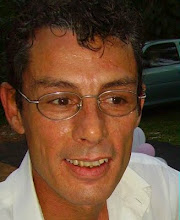

The tendons can no longer easily slide through their sheaths. The pain may extend from the forearm to the thumb base.Īny swelling of the tendons and/or thickening of the sheaths cause friction. Tendons that easily slide through their sheaths allow the thumb to move without difficulty or pain. The sheath keeps the tendons in place next to the bones of the thumb.

Usually tendons slide easily through a tunnel of tissue called a sheath. Tendons are bands of tissue that attach muscles to bones. DeQuervain’s was named after the Swiss surgeon who first described the condition in 1895. The condition is also known as de Quervain tendinitis or de Quervain’s tenosynovitis. Well…you know what I mean.De Quervain’s tendinosis is a painful swelling (inflammation) of specific tendons of the thumb. So go out there and give less and accomplish more. It’s better to drive 3 points home than to leave 15 points stranded. Work on your own rule of thumb and drive your points home. I can handle that.” When they act on that message, you have acted on their life. When you finish your speech, you don’t want you audience looking at you as if to say, “You want me to do all of this?!” Instead, you want them to say, “I can do this. I’d rather have standing invitations than standing ovations. As a result, because they’ll know there’s more where that came from, and they’ll look to you for next steps including future presentations. With structure, less can be more.Ī side benefit to you not trying to squeeze in your information is that people will SENSE that what you taught them is only the tip of the iceberg for what you know about that topic. The key question to ask yourself is, “Why do I want to speak?” If it’s to change lives then it’s better to give 4 points and have them remember 3 then to give 15 points and have them walk away with nothing. I have had several people submit 5-7 minute speeches where they’re trying to make 3-5 points. The hard part is that I know a lot about these topics and so to put more information in is ALWAYS tempting, but it’s also always trouble.

I follow this rule of thumb to keep me from squeezing my information in. I stick by this because I refuse to squeeze in my information. Therefore, if I am called to do a 45- minute keynote, how many points will I make? Right, four.Ī meeting planner might call and say, “Craig, we want you to do a 45-minute speech.” I’ll say, “Great, you’ll get the 4 Rs to Remarkable Results.” One might call and say, “Craig, we want you to do a 30-minute speech.” I’ll say, “Great, you’ll get the 3 Rs to Remarkable Results.” He might call back and say, “Craig, we just want you to give a 10 minute speech.” I’ll say, “Okay buddy but you’re down to an R…but it will be remarkable. For every 10 minutes I speak, I feel I can make one major point, illustrate it effectively, and make it palatable for my audience. So what’s the solution? Here’s a suggestion to consider. Putting in too much information forces you to rush through your speech and that is disastrous.

I once heard Bill Gove (first President of the National Speakers Association) say that “Speaking is a dialog, not a monologue.” You will be giving a monologue if you squeeze your information in. Most of the times I’ve failed in speaking can be linked to me ignoring the advice you are about to receive. There is no time to engage them, to jump on the spontaneous moments, or to really have a conversation with your audience. If you squeeze your information in, you’ll squeeze your audience out.” Have you ever heard the saying, “If you try to do too much, you’ll end up doing nothing at all.” Well…there is an old speaker’s proverb as well that states… Speaking to the Surgeons and researchers at McMaster University in Ontario, Canada The Problem


 0 kommentar(er)
0 kommentar(er)
